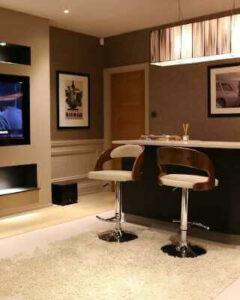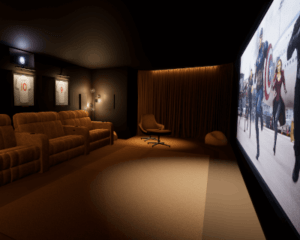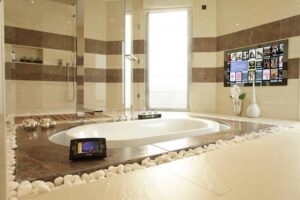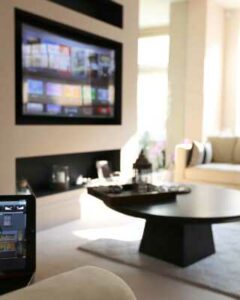What is a Lighting Control System?
A Beginners guide to Lighting Controls
What do you think of when you think about home lighting? Perhaps it’s the bulb hanging from the pendulum fitting in your living room. Maybe it’s the standard lamp in the corner. There are a few variations on the theme, but that pretty much covers home lighting, right? Wrong!
Home lighting control systems aren’t just about “lighting in your home” although that certainly plays its part. Home lighting also include things that make it dark and provide shade, such as curtains and blinds.
In a home automation system, lighting control is an important feature that includes many functions, some of which are more obvious than others.
Making it Work
Before discovering what can be achieved with a home lighting control system, it’s important to know how it works. Any part of the system of light and shade can be used manually, turned on by voice commands, turned on by pressing a button, or affected by a sensor or timer (or a more complex scheduling system).
Voice commands are usually issued via a smart assistant like Siri or Alexa, and the buttons that can be pressed are either physical buttons, or buttons on a screen.
Now you know the options, lets examine what they can do.
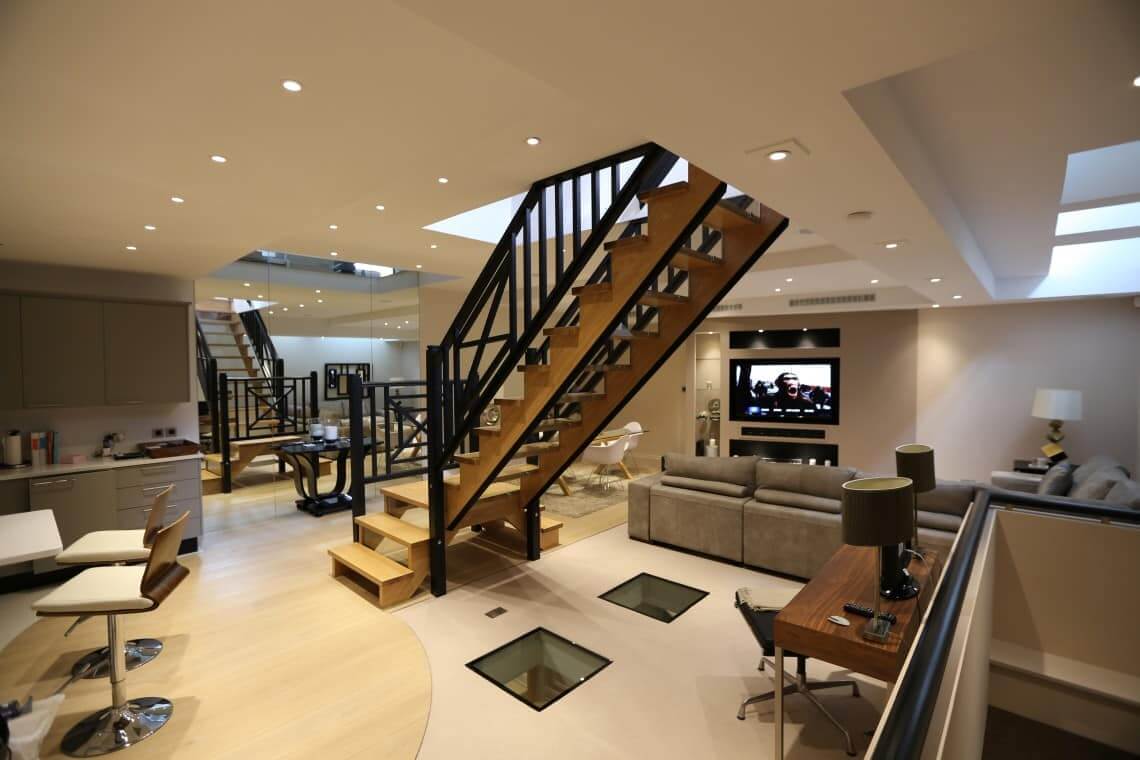
Mood lighting
With automatic dimming that matches the level you desire for different activities, mood lighting is the perfect addition to any home. You can control individual rooms and light them to your exact requirements, or you can set up plans for the entire house. Gone out and left the lights on during the day? You can even turn them off remotely.
When you turn the lights on, they don’t have to be at full strength. Modern LED lights can be easily dimmed. Compared to older styles of lighting, LED lighting is already more energy-efficient, but combined with dimming options you’ll quite possibly save a large amount on your electricity bill.
But not only is the dimming function energy saving, it also brings focus to whatever task or situation is at hand. Relaxing in the bath, watching TV, reading a book – you can have the lights configured just the way you want them. They can even be different colours when you need them to be.
You can even change the settings for different times of the year, for as the seasons change so does the natural lighting available at different times of the day. Perhaps you like the light a little dimmer in summer as outside has enough light of its own. Maybe you need a particular area brighter than another in the kitchen when you are cooking, or perhaps you have something more aesthetic in mind – is there a particular feature outside your home you want to illuminate?
If so, configure the system so it lights up at night. Set it and forget it…your home will look fantastic and you won’t need to lift a finger, nor will you waste any energy – the lights will automatically turn off just as easily and regularly as they turned on.
Blinds and Curtains
With automated blinds and curtains, you can limit the amount of light entering your home and automatically enhance your privacy. Your curtains can close on a schedule or in response to the time of day, so when it gets dark outside you don’t need to remember (or even be home) to block out the outside world and turn the lights on.
This also enhances your security as it can give the impression that someone is in, even if you are far away from home. Would-be intruders can often be kept at bay if they are unsure of anyone being present in the home.
Welcome home
By communicating with other systems in your smart home, you can notify the lighting control system when you are entering the building. This will let the system bring up the lights to an appropriate level and never leave you walking into a cold, dark home.
This will again enhance your security as well as being convenient, and more than anything, it makes it a very pleasant experience to walk through the door. There’s nothing more welcoming that a house that is lit up for your arrival.
Your evening routine
When you’re ready for bed, you can activate your bedtime routine. This can set the lights up in your bedroom and dim them as you go to sleep. If your curtains or blinds weren’t already closed, they can be closed automatically.
All you have to do is get into bed and rest.
Your morning routine
Just like an alarm clock, your lighting control system can get you up and ready for the day. Your bedroom (and other) curtains can be automatically be opened, and the natural daylight can come into your room.
Protecting you from the sun
During certain times of the year, there’s going to be a spot in your home that you like to be, but always have to close the blinds in order to see properly. As the sun moves across the sky, it reaches the perfect angle to shine in through a window and hit you straight in the eyes.
With a home lighting control system, you can set up the blinds to close automatically to avoid this. If the sun moves across a number of windows, you can even configure the blinds to close in sequence, so you can always see outside, but not be blinded by the brightness of the sun.
This feature can also be used to protect items within your home from prolonged exposure to direct sunlight, thereby saving them from fading or bleaching.
Moreover, the temperature of your room can be monitored, and should the room become to warm as a result of the position of the sun (whether its shining directly through a window or not) the blinds can be closed to help lower the temperature.
Integrating with other systems
Every other smart home system can be integrated with the lighting control system. For example, in the Welcome Home scenario, your heating can be changed to right temperature and the radio can be turned on as well as the lights.
If you have a home cinema, starting to watch a movie can signal the lights to turn down to an appropriate viewing level. When integrated with a security system, lights can be turned on both inside and outside your home in order to deter intruders.
You might have a particular configuration you use for entertaining or hosting a party, and you’ll be able to set all the lights to the right level (or colours!) while setting up the music you want to play in the background.
Making Your House into a Home
Being able to enhance the comfort that you feel in your own house is one of the best ways to truly make it feel like home. With mood lighting, automatic shading, and the ability to set up morning, evening, and entrance routines, a smart home is not only more comfortable and convenient to live in, but can also be more energy efficient.
Lights turning on and curtains closing by means of automation will provide a more secure place to live, while outdoor illumination can make your home look spectacular.
What’s not to like about home lighting control systems?

